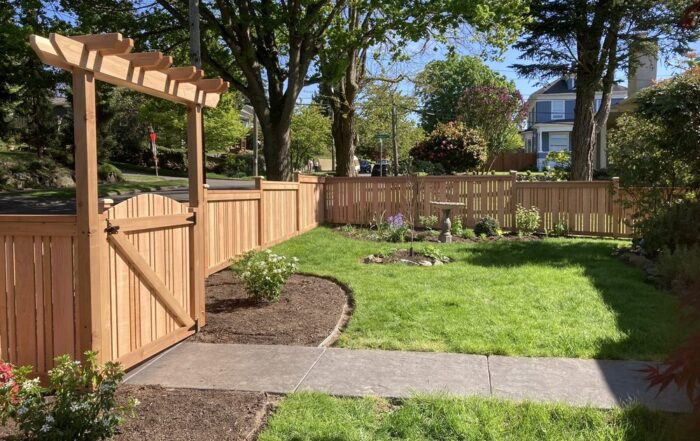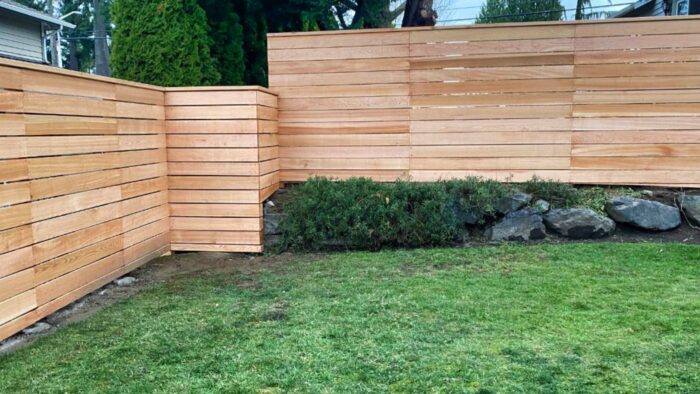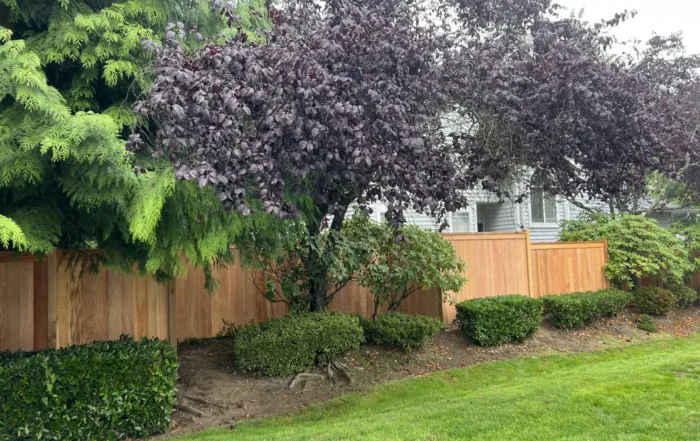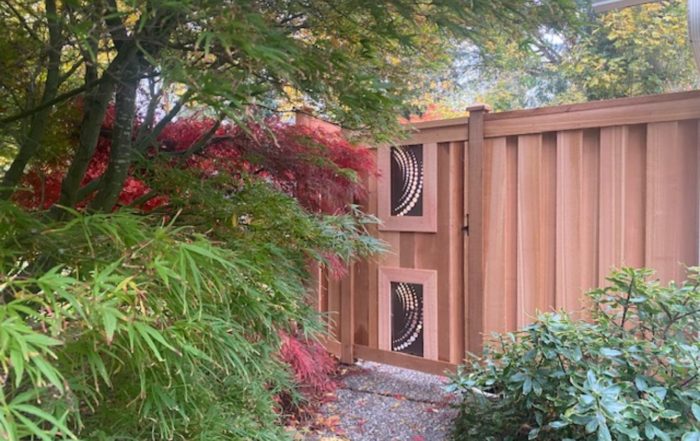Building a neighbor-friendly fence is essential for fostering good relations and enhancing property aesthetics. By carefully selecting materials, communicating openly with neighbors, and adhering to property line regulations, you can create a fence that benefits both sides and stands the test of time.
Want to build a neighbor friendly fence that enhances your property and fosters good neighborly relations? In this guide, you’ll discover essential tips on selecting the right materials, designing a fence both parties will love, and ensuring smooth communication throughout the process. We’ll provide a step-by-step approach to creating a fence that respects boundaries and promotes harmony. Selecting a reputable fence company is crucial to ensure quality workmanship and materials tailored to your unique needs.
Key Takeaways
- Creating a neighbor-friendly fence requires collaboration and consideration of both parties’ preferences to enhance community relations.
- Choosing the right materials and design for your fence is vital for durability and aesthetic harmony, benefiting both your property and your neighbor’s.
- Effective communication and agreement on responsibilities, costs, and maintenance help prevent misunderstandings and ensure a successful fence project.
- Installing a new fence can enhance property aesthetics and foster neighborly cooperation, especially when both parties share the cost and communicate effectively during the planning and construction process.
Understanding Neighbor Friendly Fences
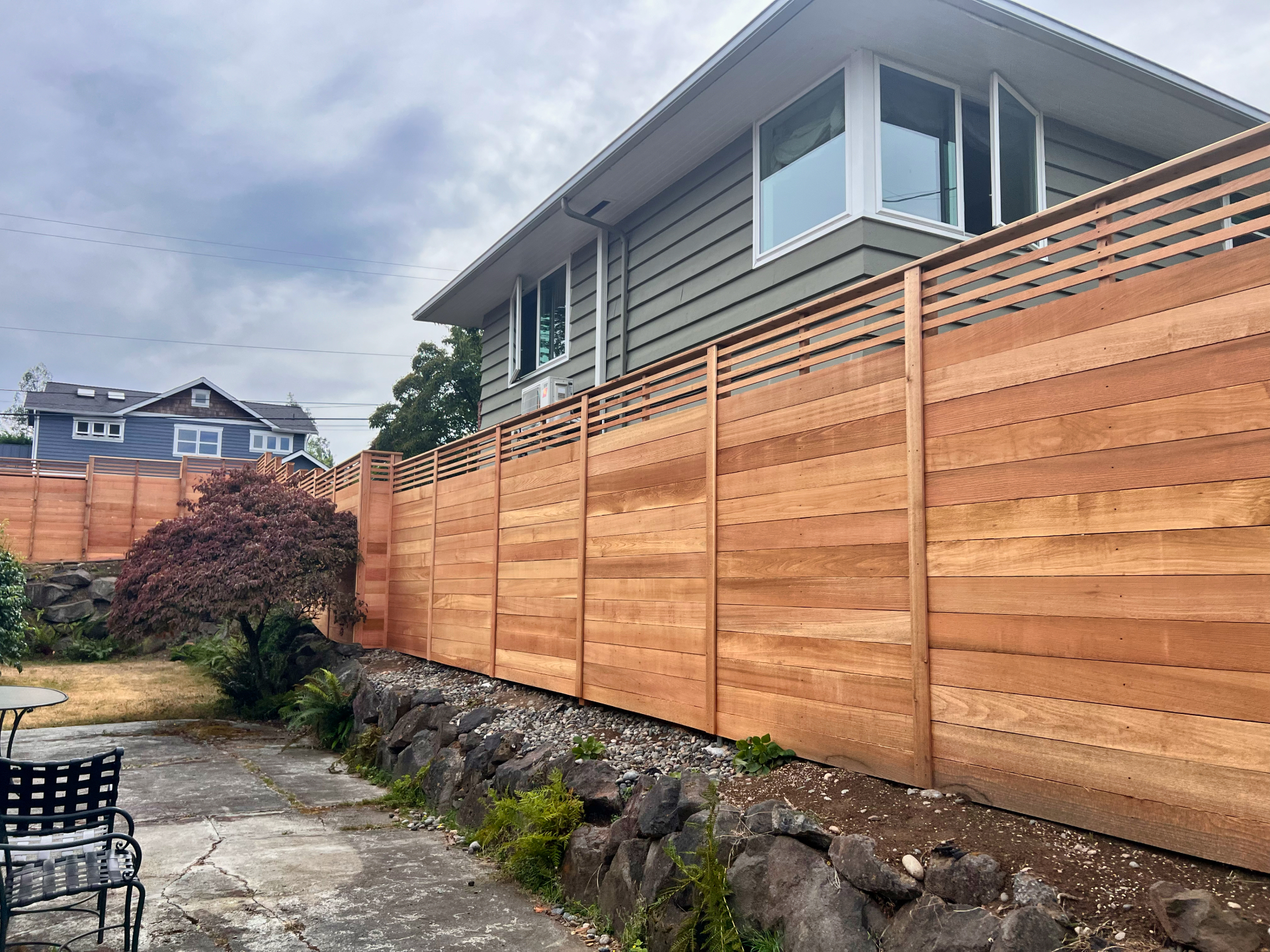
A neighbor-friendly fence, often referred to as a good neighbor fence, is designed to be equally attractive from both sides, promoting cooperation and respect between neighbors. This type of good neighbor fence is just the thing for enhancing community ties and aesthetics, fostering a sense of collaboration and mutual satisfaction.
When constructing a good neighbor fence, cooperation between homeowners is key. Consider the height, style, and materials of the fence, along with maintenance needs and potential view obstructions. Neglecting these aspects can lead to tension, as fences are often viewed as shared features in a friendly neighborhood.
The goal is to create a wood fence that provides privacy while being equally attractive on both sides. Careful planning and consideration for your neighbors can ensure that the fence brings joy to both sides, enhancing the overall appearance and harmony within your community.
Choosing the Right Materials
Choosing the right materials for your fence impacts both its durability and aesthetic appeal. Wood, like cedar, is popular for its natural decay resistance and timeless look. For low maintenance options, vinyl or aluminum fences work well—vinyl offers a clean, modern look, while aluminum is lightweight and rust-resistant.
When designing your modern fence, consider how it will integrate with your landscape and surrounding elements. Your chosen materials should complement your yard and withstand local weather conditions.
For example, steel fences are highly durable and provide enhanced security, making them suitable for properties needing extra protection. Ultimately, the materials you choose will determine the fence’s longevity and overall impact on your property.
Designing Your Fence for Mutual Satisfaction
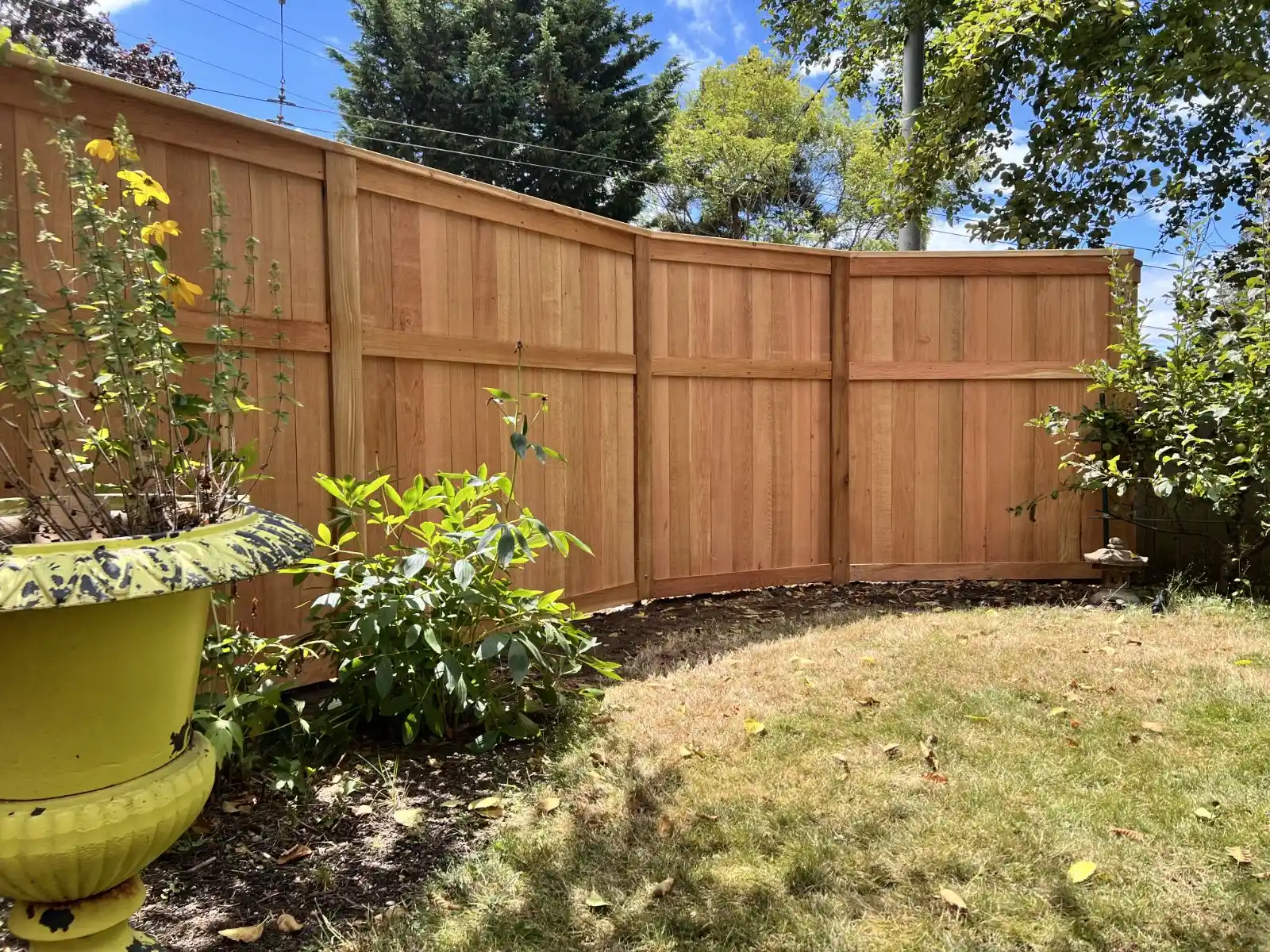
Designing a good neighbor fence involves more than just picking a style you like. It’s about creating a boundary that is equally appealing to both you and your neighbor. One popular design is the Shadow Box Fence, which provides an attractive appearance on both sides by alternating boards or panels. However, this design can be more costly due to the additional materials required.
The etiquette of good neighbor fencing suggests placing the more finished side of the fence facing your neighbor’s property. This simple gesture can prevent negative feelings and enhance the overall look of both properties. In fact, giving the good side to the neighbors is considered a common courtesy and can make a significant difference in neighborly relations. It is also crucial to understand property lines and ensure you do not encroach on a neighbor’s property to avoid legal issues.
When planning your fence design, think about your maintenance preferences. For example, a wood privacy fence requires regular staining and sealing, while vinyl or aluminum fences need less upkeep. Align the design with your maintenance capabilities to keep it attractive and functional for years.
Establishing Property Lines
Before building fences, accurately establish property line boundaries. Misjudging boundaries can lead to disputes or accidental encroachment. Legal documents like property deeds help understand property lines, and a professional survey can confirm them, often using markers like boundary stones or metal stakes.
Understanding property lines helps avoid conflicts, especially when the fence straddles two properties. Local regulations may dictate how the finished side of the fence should face, so comply with these rules. Clarifying property lines and adhering to local laws ensures a smooth and amicable fence-building process.
Communicating with Your Neighbors
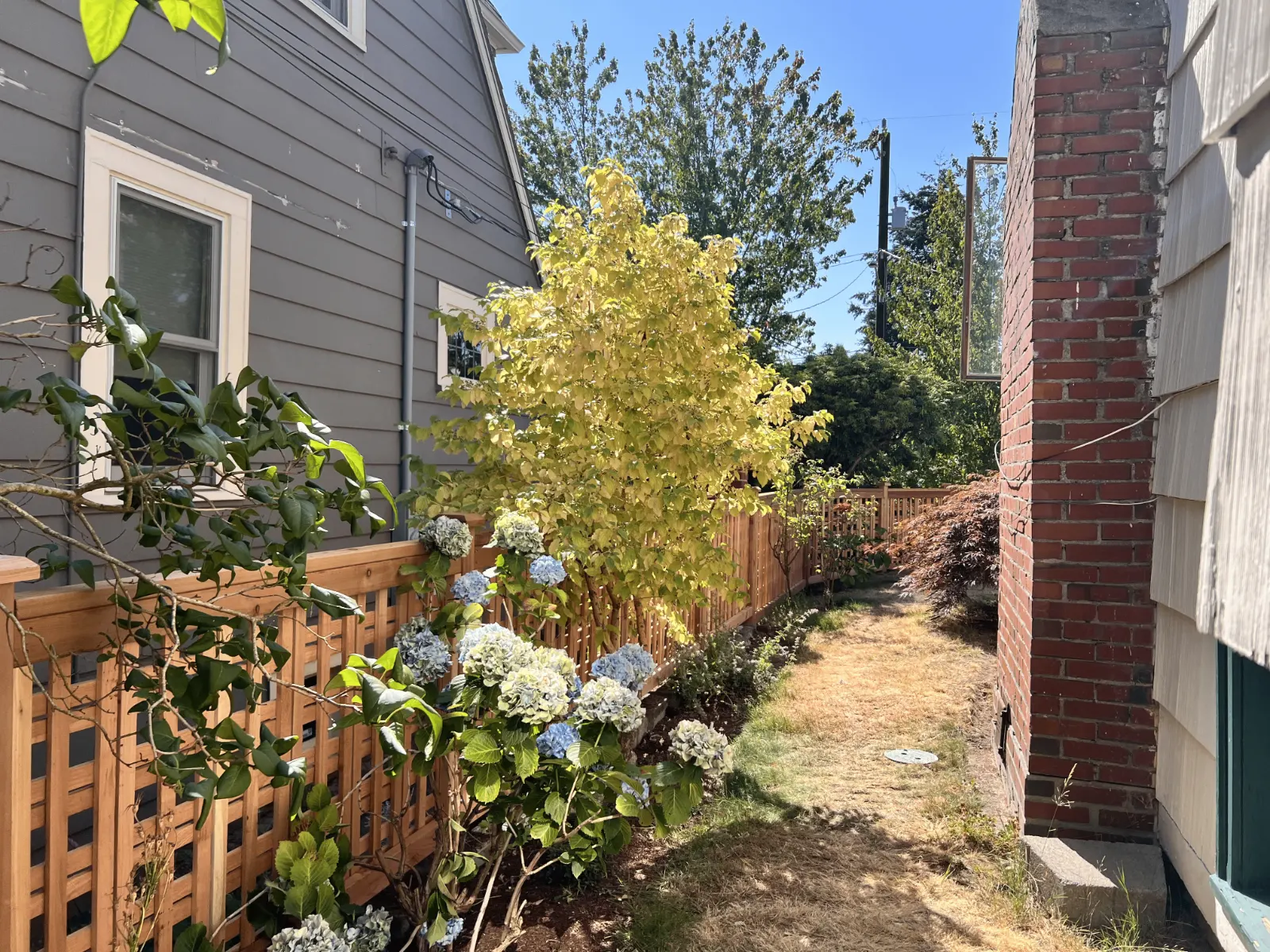
Effective communication is crucial for a successful fence project. Discussing plans with neighbors prevents misunderstandings and fosters a friendly neighborhood atmosphere. Talk about the design, potential impacts, and shared responsibilities from the start. It is important to discuss plans for a new fence with neighbors to ensure mutual satisfaction.
Addressing expectations early helps agree on the fence’s design and maintenance responsibilities, improving collaboration and satisfaction. Informing neighbors if the fence could affect their view or property values allows for adjustments and avoids conflicts.
Good communication can transform a simple fence project into an opportunity to build stronger relationships with your neighbors.
Sharing Costs and Responsibilities
Sharing the costs and responsibilities of a fence is often fair, benefiting both parties. Typically, expenses related to installation, maintenance, and repairs of a shared fence are evenly divided. Open dialogue about financial obligations prevents misunderstandings.
Creating a written agreement clarifies responsibilities, making the process smoother and more collaborative. Involving your neighbor in decisions about the fence’s design and materials ensures that a collaborative effort required for satisfaction exists for both parties.
Additionally, agreeing on a maintenance schedule helps keep the fence in good condition and avoids future disputes.
Installing the Fence Posts
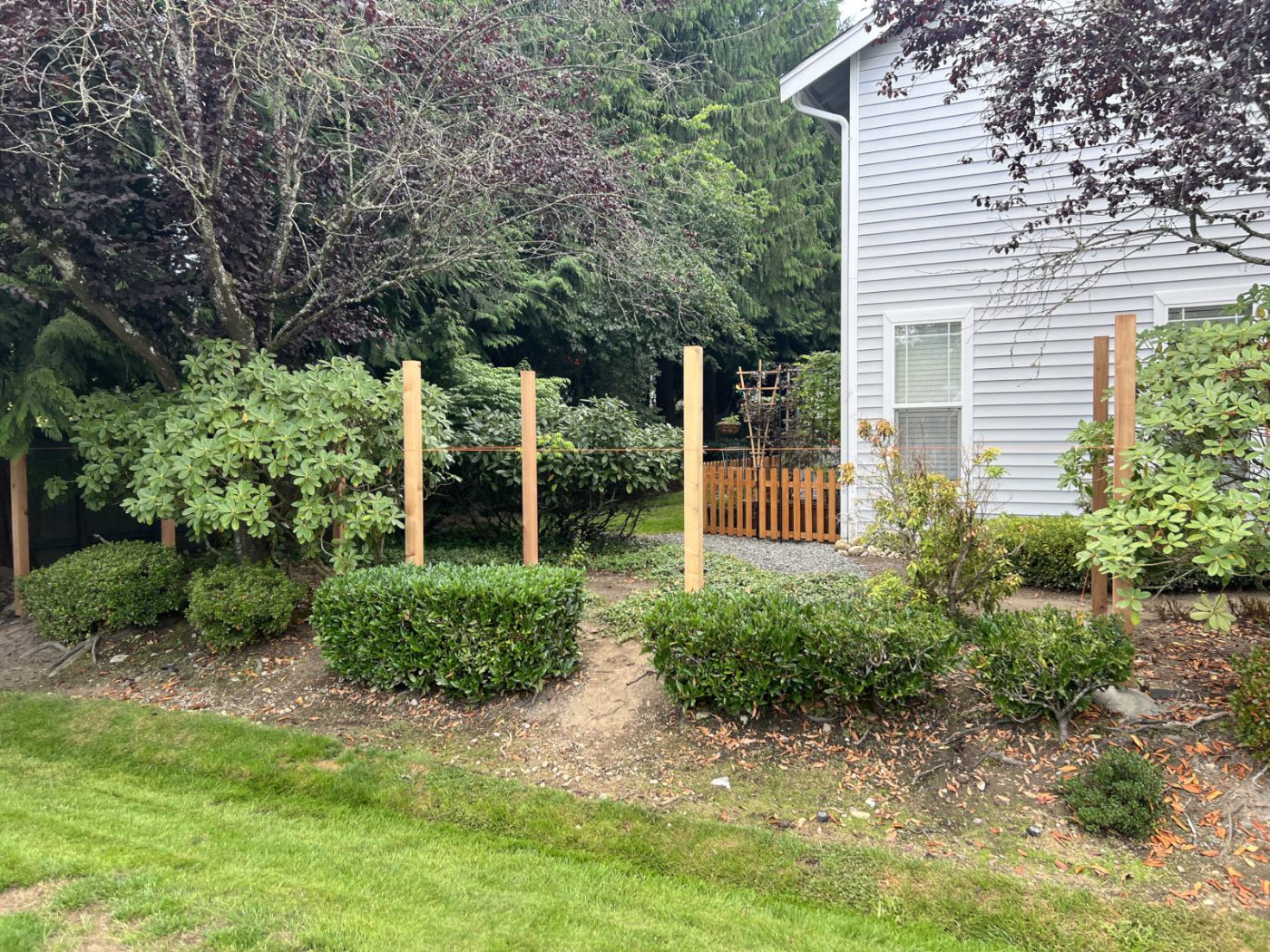
Installing the fence posts is a critical step in building a good neighbor fence. Select a location that complies with established property lines and obtain any necessary permits. Gather materials and tools like fence posts, concrete mix, a level, and a post hole digger.
Mark positions for each post using stakes and string to ensure proper alignment. As you set each post in the ground, use a level to check vertical alignment and adjust as needed to maintain a straight line and equal spacing.
Once the posts are in place, mix the concrete according to the manufacturer’s instructions and pour it into the holes. Allow the concrete to set for the recommended time before proceeding with construction.
Constructing the Fence Framework
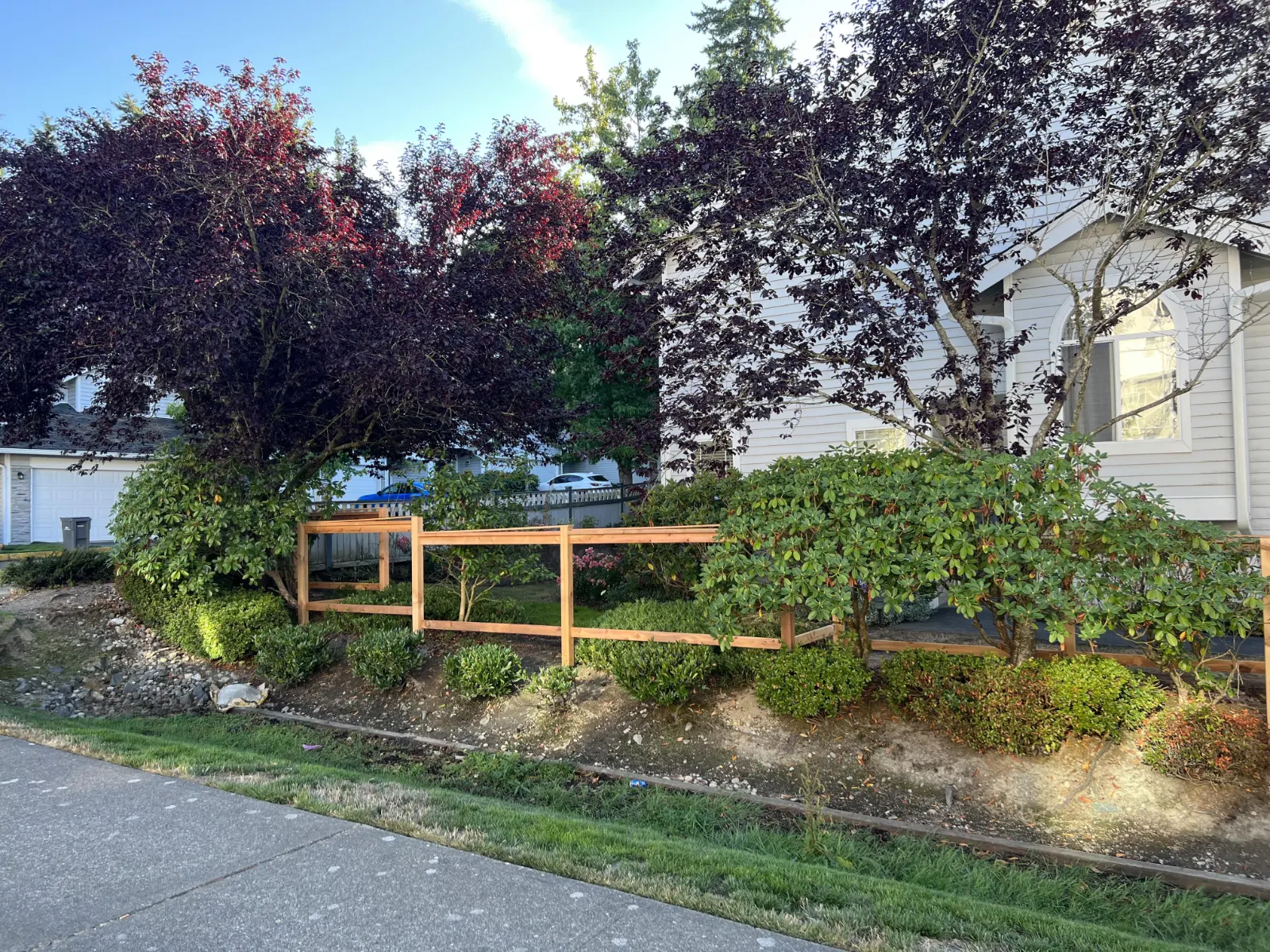
With the fence posts securely in place, the next step is constructing the fence framework. Dig holes to a depth of about one-third the post length, with wider diameters if gravel is used for enhanced drainage. Use wooden stakes and wire to brace the posts while filling the holes with soil or gravel.
For added stability, create a hillock of soil around the top of the hole to direct water away from the post, reducing the risk of rot. When using concrete, make the hole larger for better support and seal gaps with caulk or silicone to improve weather resistance.
Securely attach horizontal rails to the posts, as they provide necessary support for the fence panels.
Attaching the Fence Panels
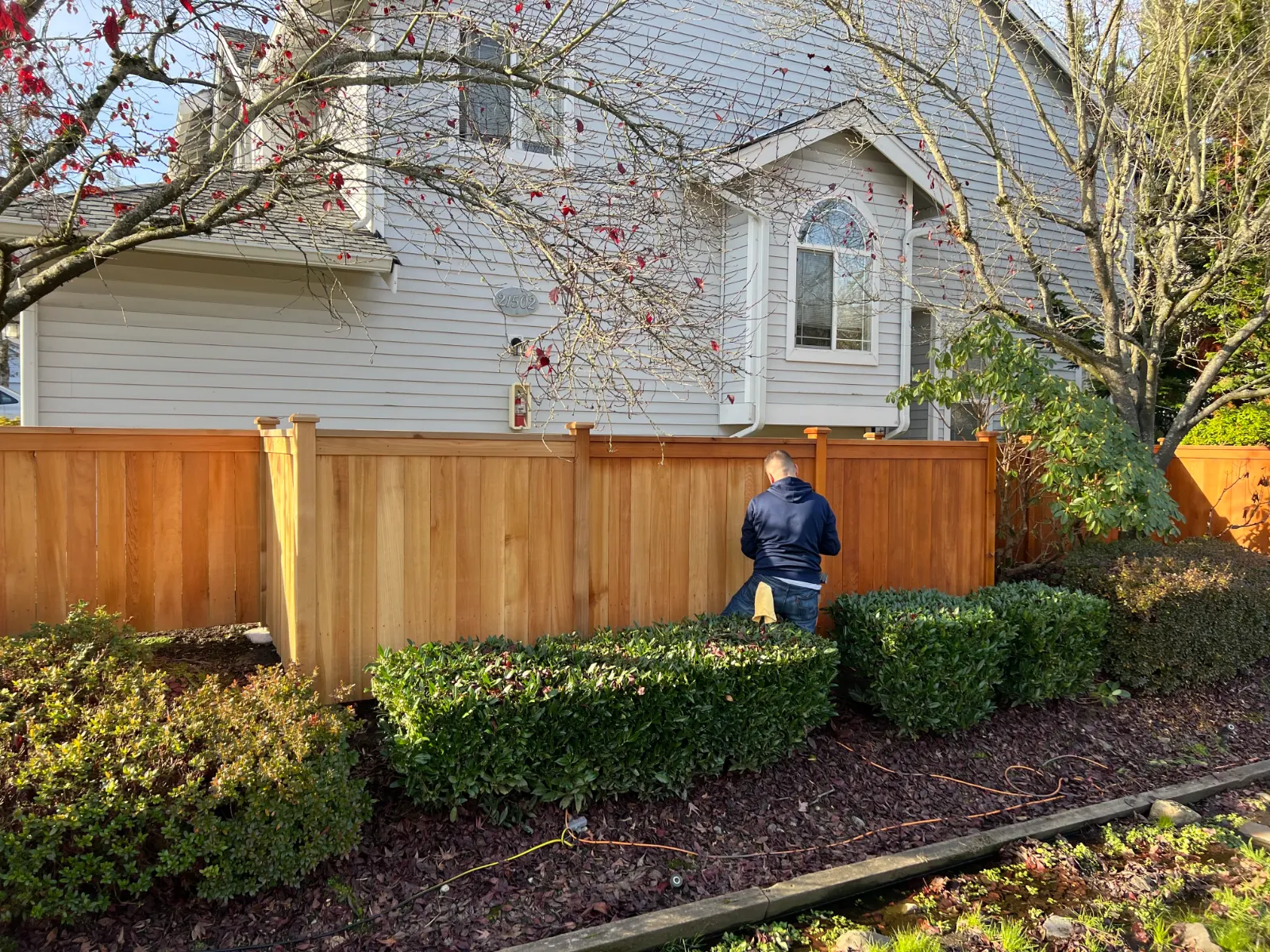
Attaching the fence panels is where your fence starts to take shape. Measure and mark evenly spaced points on the panel’s framing for nail placement. Drill pilot holes in these spots to prevent wood from splitting. Temporary supports can hold the panels in place while you secure them to the posts.
Ensure each panel is installed horizontally using a spirit level for a uniform appearance. This careful attention to detail results in a sturdy and visually appealing fence that both you and your neighbor can enjoy.
Adding Finishing Touches
Adding finishing touches to your fence can significantly enhance its appearance. Installing a decorative top adds an attractive element that benefits both sides of the fence. Using an airless sprayer for painting or staining speeds up the process and ensures a consistent finish, especially when mixing paint from different containers in a larger bucket.
Choosing the right spray tip size is crucial for achieving a smooth and even coat. These finishing touches improve aesthetics and protect the fence from weathering, ensuring it remains a beautiful boundary for years.
Maintaining Your Neighbor Friendly Fence
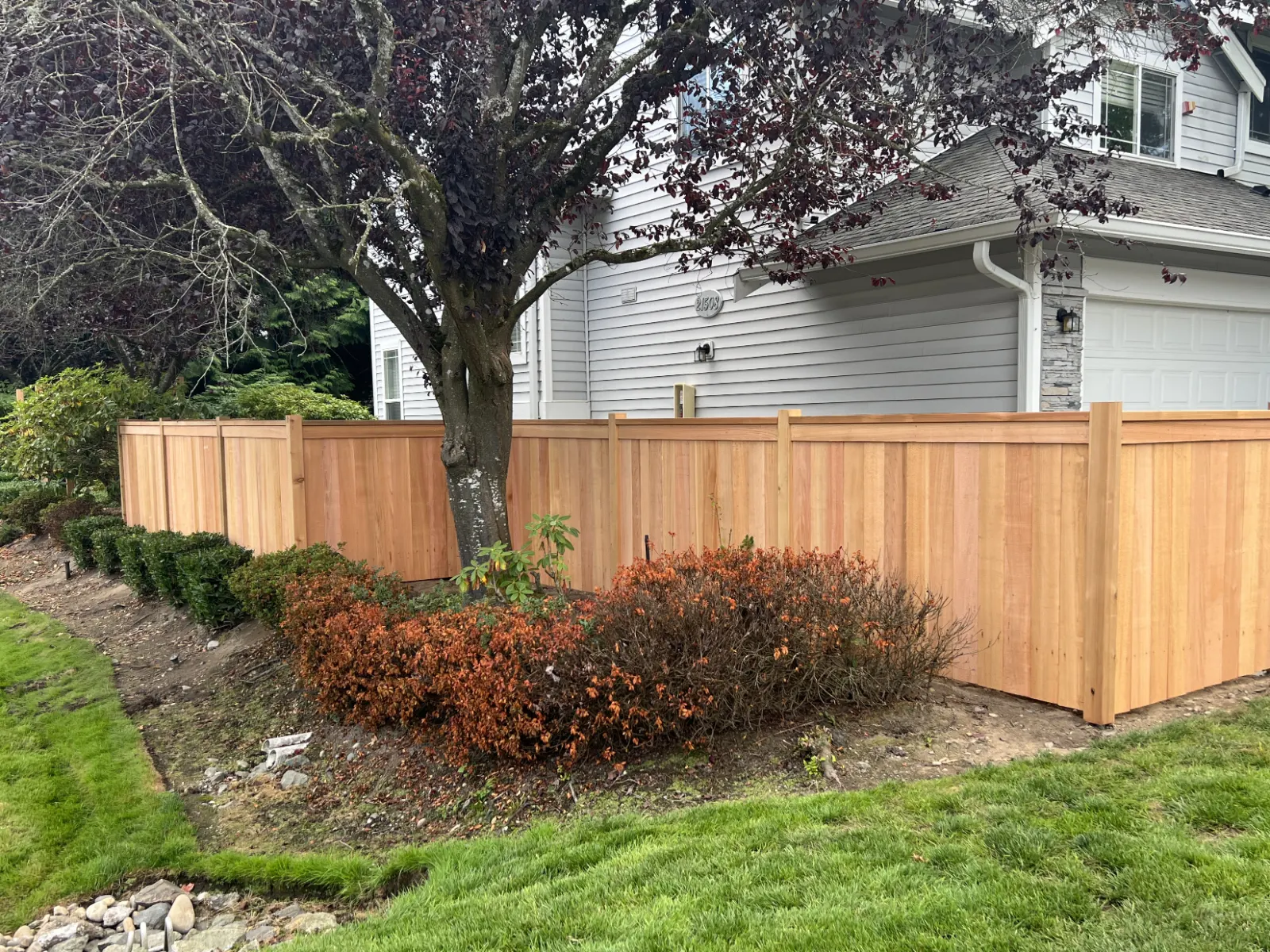
Routine maintenance keeps your good neighbor fence in top condition. Regular washing and inspections help identify damage early.
For wooden fences, tasks like:
- cleaning
- staining
- sealing
- fixing loose sections
are vital to prevent decay.
Vinyl and aluminum fences are lower maintenance, usually requiring just an occasional wash.
Using gravel at the bottom of post holes aids in drainage, prolonging the lifespan of the fence posts. Ensuring that the panels are slightly elevated above the ground prevents moisture damage. Galvanized nails enhance durability against weather elements, while trimming nearby vegetation prevents overgrowth and potential damage.
Benefits of a Neighbor Friendly Fence

A neighbor-friendly fence offers numerous benefits, fostering a sense of community and promoting better relationships among neighbors. Regular upkeep enhances both aesthetics and property value, benefiting not only your home but also your neighbor’s property. Sharing the costs and responsibilities of the fence makes it a collaborative effort, improving curb appeal and mutual satisfaction. Installing a new fence can further enhance property aesthetics and foster neighborly cooperation.
Investing in a good neighbor fence means contributing to a friendly neighborhood where everyone feels respected and valued. Selecting a reputable fence company ensures quality workmanship and materials tailored to your unique needs.
Common Mistakes to Avoid
Avoiding common mistakes can save time and prevent conflicts when building your fence. Ensure the fence is visually appealing from both sides to maintain good relations with your neighbors. Clearly establishing property lines is crucial to avoid disputes. Open and respectful communication about your fence plans ensures your neighbor’s input is considered, fostering a cooperative spirit. It is also important to understand property lines and ensure you do not encroach on a neighbor’s property to avoid legal implications and potential removal of the fence.
Agreeing on shared costs and responsibilities for maintenance makes the process fair and collaborative. Regular maintenance, including inspections and repairs, keeps the fence in good condition and avoids potential conflicts.
Summary
Building a neighbor-friendly fence is a rewarding project that enhances your property and fosters good relations with your neighbors. By understanding what makes a good neighbor fence, choosing the right materials, designing for mutual satisfaction, and maintaining open communication, you can create a boundary that benefits everyone involved. Remember, a well-maintained fence not only looks great but also stands as a testament to cooperation and respect in a friendly neighborhood. Additionally, installing a new fence can significantly enhance property aesthetics and foster neighborly cooperation.
Selecting a reputable fence company is crucial to ensure quality workmanship and materials tailored to your unique needs.
Frequently Asked Questions
What is a good neighbor fence?
A good neighbor fence is visually appealing from both sides, fostering a sense of cooperation and respect between you and your neighbors. It’s all about creating a positive vibe in your community!
What materials are best for a durable fence?
For a durable fence, cedar wood, vinyl, aluminum, and steel are excellent choices. They offer decay resistance, low maintenance, and high security, ensuring your fence stands the test of time.
How do I establish property lines before building a fence?
To nail down your property lines before building a fence, check your property deed and consider hiring a professional surveyor for the most accurate results. Look for any existing boundary markers like stones or stakes to help guide you too!
How should I communicate with my neighbors about my fence plans?
It’s best to talk to your neighbors about your fence plans early on, sharing your design ideas and maintenance responsibilities to avoid any misunderstandings and build a good rapport. Clear communication sets the tone for positive neighborly relations!
What are some common mistakes to avoid when building a fence?
To avoid common mistakes when building a fence, clearly establish property lines to prevent disputes, communicate openly with neighbors about costs and design, and ensure the fence looks good from both sides. Regular maintenance is also key to keeping it in top shape.

